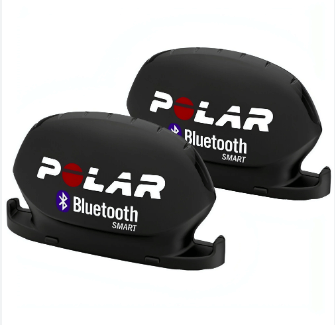
what is a cadence sensor on an ebike?
A cadence sensor on an e-bike is a device that measures the rotational speed of the bike’s pedals, typically in revolutions per minute (RPM). This information is then used to control the assist level provided by the electric motor, allowing the rider to maintain a consistent pedaling rate and optimize the use of the battery power. Some e-bikes also use the cadence sensor data to provide a rider with feedback on their pedaling efficiency. Torque sensors is also used on ebikes.
How does a cadence sensor work on an ebike?
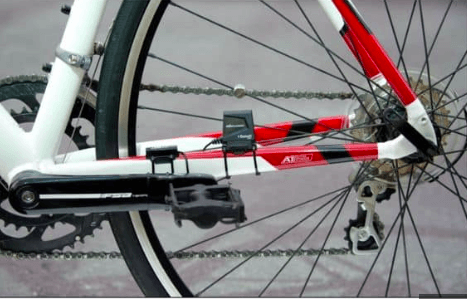
A cadence sensor on an e-bike typically uses a small magnet that is mounted on one of the bike’s pedals or crank arms, and a sensor that is mounted on the frame near the bottom bracket. As the magnet passes by the sensor, it generates an electrical signal that is sent to the bike’s controller. The controller then uses this information to determine the pedal rotational speed and adjust the assist level provided by the electric motor. The sensor can work through a reed switch or hall effect sensor.
The sensor is connected to the controller which interpret the data and adjust the power accordingly.
Some cadence sensors use wireless technology like Bluetooth to transmit the data to a display or smartphone app, which allows the rider to see their pedaling rate in real-time.
Do all Ebikes have a cadence sensor?

Not all e-bikes have a cadence sensor, but many do. Cadence sensors are typically found on e-bikes that use pedal assist, which means that the electric motor provides power to the bike based on the rider’s pedaling rate. This allows the rider to get the most out of the battery and motor, and also helps to mimic the feeling of riding a traditional bike.
Some e-bikes have torque sensor which is an alternative to cadence sensor. Torque sensors measure the force that the rider applies to the pedals and adjust the motor power accordingly. This type of sensor provides a more intuitive riding experience, as the motor power matches the rider’s effort more closely.
E-bikes that rely on a throttle or a PAS (Pedal Assist System) only don’t require a cadence sensor.
Do I need a speed or cadence sensor?

Whether you need a speed sensor or cadence sensor depends on the type of e-bike you have and the type of riding you will be doing.
Speed sensors are typically used on e-bikes to measure the bike’s speed, and they are most commonly found on e-bikes that have a throttled-based power mode. Speed sensors are used to limit the maximum speed that the e-bike can reach, and to provide the rider with information about their speed, which can be useful for navigation, tracking progress or safety purposes.
Cadence sensors, on the other hand, are typically used on e-bikes that have a pedal-assist based power mode. A cadence sensor measures the rotational speed of the bike’s pedals and uses this information to control the assist level provided by the electric motor. This allows the rider to maintain a consistent pedaling rate and optimize the use of the battery power. Cadence sensors can also provide the rider with feedback on their pedaling efficiency, which can be useful for training and improving riding performance.
In summary, if you want to use an e-bike in the throttle-based mode, you will need a speed sensor. If you want to use the e-bike in pedal-assist mode, you will need a cadence sensor. Some e-bikes come with both sensors, which can be useful if you plan to switch between the different power modes.
Can I use my phone as a cadence sensor?
It is possible to use your phone as a cadence sensor, but it will require additional hardware and software.
One way to use your phone as a cadence sensor is to install a cycling app that uses the phone’s accelerometer or GPS to measure your cadence. Some apps also use the phone’s microphone to detect the sound of the chain moving and calculate the cadence. However, these apps may not be as accurate as a dedicated cadence sensor.
Another way is to use a Bluetooth or ANT+ sensor that attaches to your bike and sends the cadence data to your phone. This option requires an additional sensor and the phone should have Bluetooth or ANT+ capabilities and a compatible app that can interpret the sensor’s data and display it.
Using your phone as a cadence sensor will also consume the phone’s battery and may not be as accurate as a dedicated sensor. It is also important to keep in mind that using your phone while cycling can be dangerous and it is not recommended to use it while cycling.
In summary, it is possible to use your phone as a cadence sensor, but it will require additional hardware and software, and may not be as accurate or reliable as a dedicated cadence sensor.
Can I add a cadence sensor to spin bike?
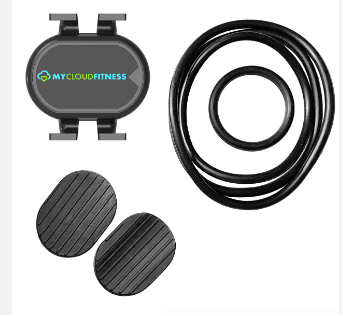
Yes, it is possible to add a cadence sensor to a spin bike.
There are a few different ways to add a cadence sensor to a spin bike, depending on the type of spin bike and sensor you have.
One way is to use a wireless sensor that attaches to the bike’s flywheel or pedal and sends the cadence data to a compatible device such as a smartphone or cycling computer. These sensors typically use Bluetooth or ANT+ technology to transmit the data, and they can be paired with a variety of apps or devices that can display the cadence information.
Another way is to use a magnet and sensor that attaches to the bike’s flywheel or pedal, similar to how it works on e-bikes. This type of sensor can be connected to a device such as a smartphone or cycling computer, but it will require additional wiring and programming.
It’s important to note that, not all spin bikes are compatible with adding a cadence sensor, some spin bike models may not have the required space or interface for adding a sensor. It’s best to check with the manufacturer or consult with a professional before proceeding with adding a cadence sensor.
In summary, it is possible to add a cadence sensor to a spin bike, but it will depend on the type of spin bike and sensor you have, and it may require additional hardware, software and programming.
Where should I place my cadence sensor?
The placement of a cadence sensor on a bike will depend on the type of sensor you are using and the bike’s design.
For a magnet and sensor system, typically the magnet is mounted on the pedal or crank arm and the sensor is mounted on the frame near the bottom bracket. This placement ensures that the sensor can detect the magnet as it passes by, providing an accurate measurement of the cadence.
For wireless sensors, the placement is less critical, as the sensor can be mounted anywhere on the bike and it will still send the data wirelessly to the device. However, it’s important to make sure that the sensor is securely mounted and won’t move around while riding.
It’s best to consult the manufacturer’s instructions or a professional to determine the best placement for your sensor, as well as to ensure that the sensor is properly installed and working correctly.
In summary, the placement of a cadence sensor will depend on the type of sensor and the bike’s design, but it should be placed where the sensor can detect the magnet or the sensor signal is not obstructed and can be securely mounted.
How do you track cadence on a stationary bike?
There are a few different ways to track cadence on a stationary bike:
- Use a cycling computer or a fitness tracker that is compatible with a cadence sensor. These devices can be paired with a wireless sensor that attaches to the bike’s flywheel or pedal, and they can display the cadence information in real-time.
- Use a smartphone app that is compatible with a cadence sensor. Many cycling apps can track your cadence using the phone’s accelerometer or GPS, and they can display the cadence information on the phone’s screen.
- Use a spin bike with a built-in cadence sensor. Some spin bikes come with a built-in cadence sensor that displays the cadence information on a digital console.
- Use a power meter that also records cadence. Some power meters have the capability of recording cadence as well, and they can be paired with a computer or smartphone to display the information.
No matter which option you choose, it’s important to make sure that the sensor or device is properly calibrated and placed, and that the cadence information is accurate.
In summary, you can track cadence on a stationary bike by using a cycling computer or fitness tracker that is compatible with a cadence sensor, a smartphone app, a spin bike with a built-in cadence sensor, or a power meter that also records cadence.
How long does cadence sensor battery last?
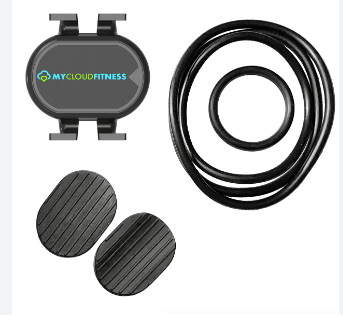
The battery life of a cadence sensor will depend on the type of sensor and the brand.
Many wireless cadence sensors use coin cell batteries, and these batteries can last for several months to a year, depending on usage. Some sensors have a low battery indicator that will alert you when it’s time to replace the battery.
Other sensors, like those that connect to a bike computer, use rechargeable batteries, and the battery life will vary depending on how often the sensor is used and how long it is left on. These sensors usually have a battery life of around 1-2 months with a full charge, again depending on usage.
It’s important to consult the manufacturer’s instructions or check the product’s specifications to determine the battery life of the sensor. Additionally, it’s also a good practice to check the battery level of the sensor, and replace the battery when necessary to ensure the sensor is always working properly.
In summary, the battery life of a cadence sensor will depend on the type of sensor and the brand, but it can range from several months to a year for coin cell batteries and 1-2 months for rechargeable batteries.
Is cadence of 150 too slow?
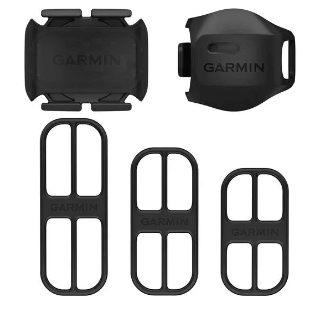
Cadence, which is measured in revolutions per minute (RPM), is a personal preference, and what is considered “too slow” can vary depending on the individual and the type of riding they are doing.
A general rule of thumb is that a cadence of around 80-100 RPM is considered a comfortable and efficient pedaling rate for most riders. However, some riders may prefer a higher or lower cadence depending on their fitness level, riding style, and personal preferences.
A cadence of 150 RPM is considered to be quite high, and it’s generally used for sprinting or high-intensity training. It’s not a sustainable pedaling rate for long rides or for most people. Some riders may be able to maintain this high cadence for short intervals, but it’s not recommended for extended periods of time.
It’s important to note that, the optimal cadence will depend on the rider’s physical condition, fitness, and the type of riding they are doing. It’s best to experiment with different cadences to find the one that works best for you.
In summary, cadence is a personal preference, and what is considered “too slow” can vary depending on the individual and the type of riding they are doing. A cadence of 150 RPM is considered to be quite high and it’s not a sustainable pedaling rate for long rides or for most people.
Why is 180 cadence good?

A cadence of 180 revolutions per minute (RPM) is considered to be a high cadence, and it is often associated with a number of benefits.
- Efficiency: A high cadence of 180 RPM can help to increase pedaling efficiency. At high cadences, the rider’s legs are moving faster, and the muscle fibers are contracting more frequently. This can help to reduce muscle fatigue and increase endurance.
- Reduced stress on joints: High cadences place less stress on the rider’s joints. At high cadences, the rider’s legs are moving quickly and the force on each pedal stroke is spread out over a greater number of revolutions, reducing the stress on the joints.
- Increased power output: High cadences can increase power output. At high cadences, the rider’s legs are moving faster, and this can help to increase the power output of the rider.
- Improved leg speed and smoothness: High cadences can improve leg speed and smoothness. At high cadences, the rider’s legs are moving quickly, and this can help to improve the rider’s leg speed and smoothness.
It’s important to note that, while a high cadence of 180 RPM can be beneficial, it’s not appropriate for all riders or all types of riding. It is particularly useful for high-intensity interval training, and for riders looking to increase their power output and speed. However, it’s not recommended for long rides, as it’s not sustainable for most people for an extended period of time.
In summary, a cadence of 180 RPM is considered to be a high cadence and it’s associated with several benefits such as increased efficiency, reduced stress on joints, increased power output, and improved leg speed and smoothness. However, it’s not appropriate for all riders or all types of riding.
Is a cadence sensor worth it?
Whether a cadence sensor is worth it or not depends on the individual’s preferences and the type of e-bike they are using.
Cadence sensors provide a more efficient use of the battery, by only providing assist when the rider is pedaling. It also allows the rider to maintain a consistent pedaling rate and get the most out of the battery and motor.
Cadence sensor can also provide the rider with feedback on their pedaling efficiency, which can be useful for those who are training or want to improve their riding performance.
On the other hand, some riders may prefer the more intuitive riding experience provided by torque sensors, which adjust the motor power based on the rider’s effort rather than pedaling rate.
In summary, a cadence sensor can be a useful feature for e-bikes that use pedal assist, but it may not be necessary for everyone. It ultimately depends on the rider’s preferences and the type of riding they will be doing.






